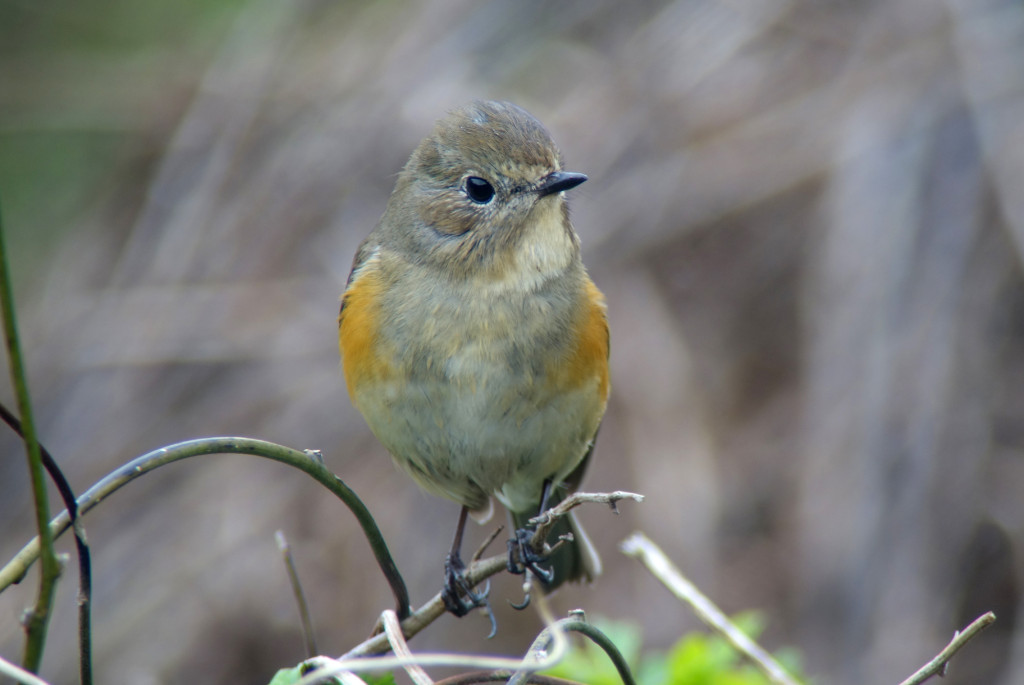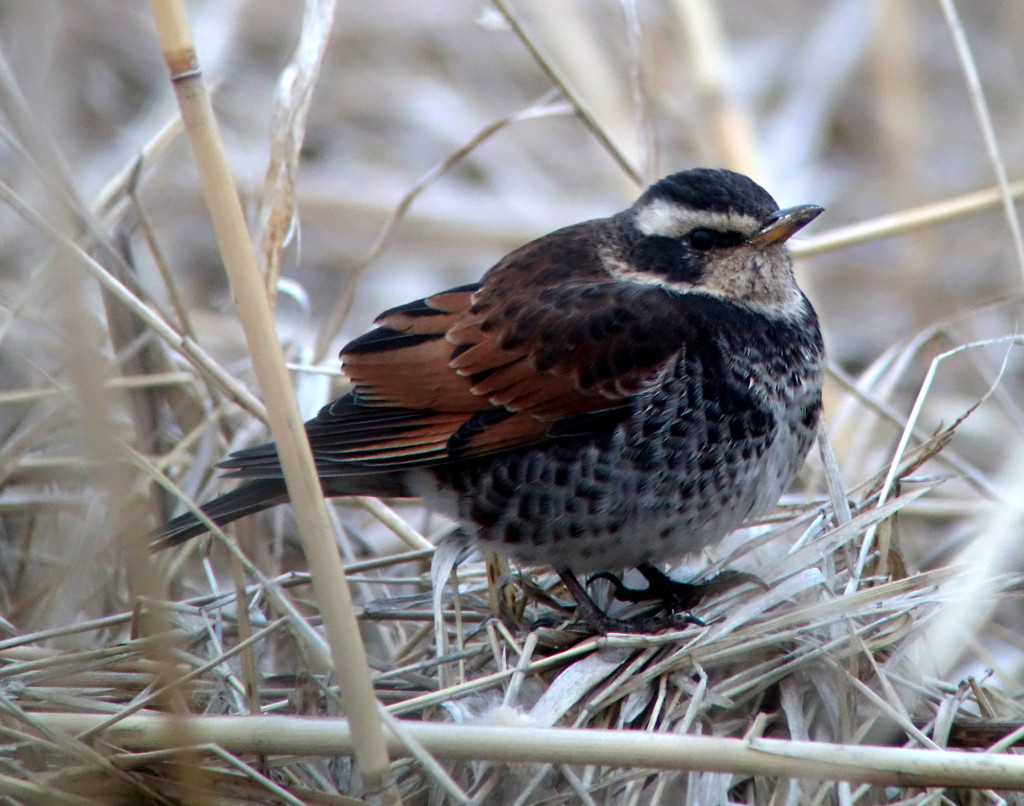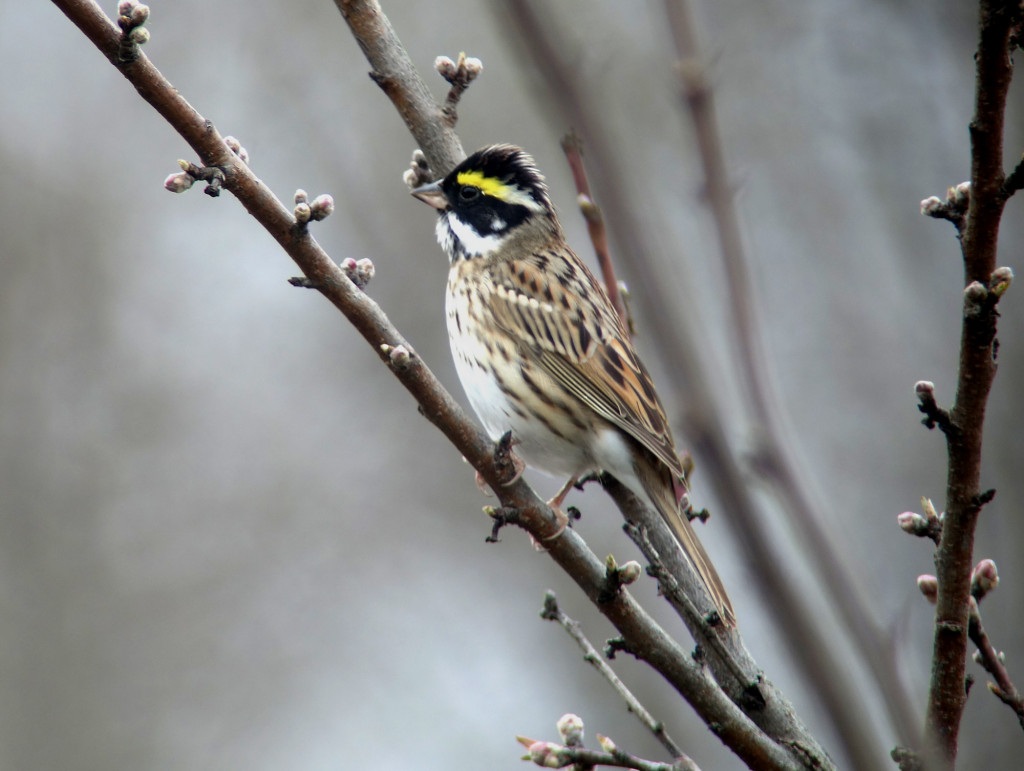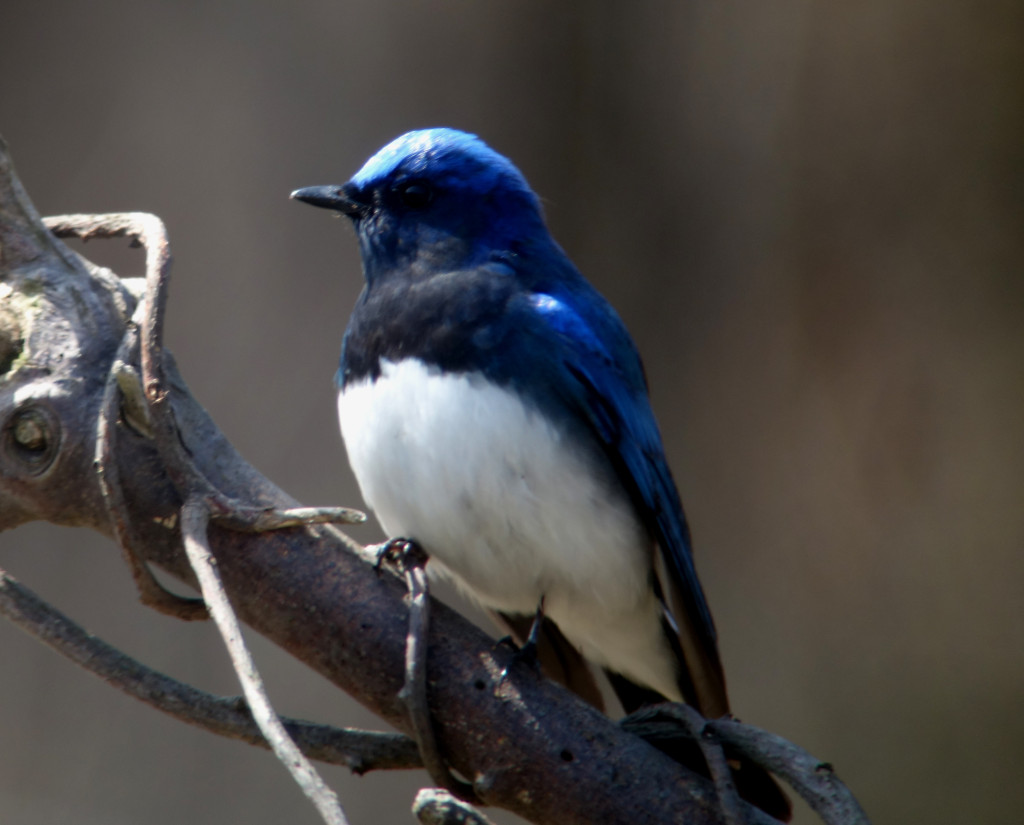Bird News from Nial Moores
With count effort focused on only three areas (excluding the main reservoir and adjacent wetland bisected by a shiny new and not very useful road) a modest total of 97 species was recorded, with the vast majority migrants (and obvious residents, already paired-up or nest-building, made up of e.g. Common Pheasant, Large-billed Crow, Azure-winged Magpie, Eastern Great Tit, white-headed Long-tailed Tit and Eurasian Tree Sparrow).
 Azure-winged Magpie Cyanopica cyanus © Nial Moores
Azure-winged Magpie Cyanopica cyanus © Nial Moores
Fieldwork was limited to two full days (17th and 18th), two half-days and a stolen couple of hours after a fog-delayed boat (on 15th), with dense fog on 15th; rain and occasional strong winds from the afternoon of 16th through till about 3AM on17th; sunshine then an afternoon thunderstorm on 18th; and finally glorious sunshine on 19th, with light easterlies that helped to drop a good number of birds. Numbers of several usually common mid-April species (e.g. in descending order of abundance Red-flanked Bluetail, Olive-backed Pipit, Stejneger’s Stonechat and White Wagtail) were rather lower than expected, with none of these species hitting 50 on any one day.
 Red-flanked Bluetail Tarsiger cyanurus © Nial Moores
Red-flanked Bluetail Tarsiger cyanurus © Nial Moores
Most notable and numerous species included:
Japanese Quail. Four in Jincheon on 19th.
Black-tailed Gull. The commonest bird, with at least 9,000 along parts of the coast visited on 18th.
Japanese Waxwing. One in Jincheon on 15th.
Light-vented Bulbul. Apparently still increasing on the island, as seen at multiple locations and probably 50 were in and around Jincheon alone (including a single flock of 40 on 16th).
Red-billed Starling. Maximum was 13 in Jincheon on 16th.
 Red-billed Starling Spodiopsar sericeus © Nial Moores
Red-billed Starling Spodiopsar sericeus © Nial Moores
Dusky Thrush. Easily the most numerous and / or visible of the thrushes, with the highest count 130 on the 17th (when two hybrids with Naumann’s also seen).
 Dusky Thrush Turdus eunomus © Nial Moores
Dusky Thrush Turdus eunomus © Nial Moores
Brown-headed Thrush. One on 17th in Dumunjin.
Blue-and-white Flycatcher. Small numbers present from the 17th, when the highest day-count (of 15) was made. As always males were highly variable in appearance – begging the question still as to whether cumatilis is really as distinct as it is supposed to be. A few were dark blue above and black-bibbed as expected in or close to nominate; some had blue admixed into the black (expected in intermedia that breed in Korea); and a couple were paler above, almost verditer-blue, with extensive blue admixed into the black of the bib and some streaking on the upperparts. One even had clearly blue ear-coverts and throat, with only the centre of the bib matt black (re-reading Paul Leader’s paper on Zappey’s perhaps this was closet to a “Russian-type” intermedia?).
 Blue-and-white Flycatchers Cyanoptila cyanomelana intermedia © Nial Moores
Blue-and-white Flycatchers Cyanoptila cyanomelana intermedia © Nial Moores
Zappey’s Flycatcher. One seen briefly on 17th, perched next to an intermedia! In direct comparison, this bird looked obviously larger and bulkier, and lacked black on the head apart from on the lores and above the bill. The bib was blue and seemed to extend further down the breast than in most Blue-and-whites; and there was a hint of black tipping to some of lower edge of the bluey-turquoise. Of interest, the flanks also looked rather clean (apparently lacking the obvious sooty or blue wash shown there by most Blue-and-whites).
 Zappey’s Flycatcher Cyanoptila cumatlilis (on right) with Blue-and-white Flycatcher(left) ©Nial Moores
Zappey’s Flycatcher Cyanoptila cumatlilis (on right) with Blue-and-white Flycatcher(left) ©Nial Moores
Narcissus Flycatcher. One obviously nominate male (on 18th) and one owstoni-type male (on 15th and 16th). Although not completely convincing, the plumage of the owstoni-type was rather retarded; the yellow of the supralorals reached the nostrils (or as good as); there was a hint of darker lower edge to the ear coverts; the bill looked thick and pale-based and the legs were pale blue-grey; and the primaries also looked rather blunt with fewer tips beyond the tertials than expected in a nominate.
 Nominate Narcissus Flycatcher Ficedula narcissina © Nial Moores
Nominate Narcissus Flycatcher Ficedula narcissina © Nial Moores
 Suspected Ficedula narcissina owstoni © Nial Moores
Suspected Ficedula narcissina owstoni © Nial Moores
Eastern Yellow Wagtail. Only a handful each day, with the first taivana on the 19th.
 Eastern Yellow Wagtail Motacilla tschutschensis taivana © Nial Moores
Eastern Yellow Wagtail Motacilla tschutschensis taivana © Nial Moores
Brambling. The most numerous landbird, with between 1500 and 2500 in Jincheon alone on 16th the highest day count.
Little Bunting. Recorded daily, with a substantial arrival on the 19th when at least 120 were in Jincheon, including many singing enthusiastically (and although most unscientific to suggest, looking quite joyful as they did so!).
 Little Bunting Emberiza pusilla © Nial Moores
Little Bunting Emberiza pusilla © Nial Moores
Yellow-browed Bunting. The first three were recorded on the 16th; with a gradual increase through to the 19th when 10-15 were in Incheon.
 Yellow-browed Bunting Emberiza chrysophrys © Nial Moores
Yellow-browed Bunting Emberiza chrysophrys © Nial Moores
Black-faced Bunting. The commonest bunting (with daily counts ranging from 60 to 150+, highest on 19th), with almost all birds being male and showing a wonderful range of plumage, from one or two personata-types through to some that apparently lacked any yellow on the underparts; and some heavily masked with others completely hooded. Oddest of all, however, was a presumed leucistic individual, with an off-yellow almost plain head and weakly yellow underparts. In direct comparison with more typical birds it looked a little larger and sounded different (with a slight hint of a click in the call).
 Black-faced Buntings Emberiza spodocephala © showing a range of underpart colour and patterning Nial Moores
Black-faced Buntings Emberiza spodocephala © showing a range of underpart colour and patterning Nial Moores
 Presumed leucistic Black-faced Bunting © Nial Moores
Presumed leucistic Black-faced Bunting © Nial Moores
Note: All images digiscoped with a handheld camera through a superb Swarovski scope.







